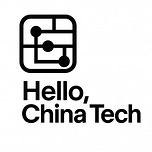📋 Quick Reader Survey
Before you dive into today’s podcast, I’d love 2 minutes of your time to help shape Hello China Tech’s future. I’m planning some exciting content updates for 2025, and your input is invaluable.
The survey is completely anonymous, and I’ll share key findings next week. Now, let’s get to today’s podcast.
Episode Summary
This episode unpacks the “Great Robotics Divide,” contrasting Silicon Valley’s high-capital, perfection-focused “moonshot” strategy with China’s state-backed “industrial warfare” approach. We explore how Chinese firms like Unitree leverage imperfect products and public spectacles to fund iterative development—a stark contrast to the massive R&D cycles of American companies like Figure AI. This isn’t just a race for better technology; it’s a battle between two economic philosophies competing to control the future of global manufacturing and supply chains.
In This Episode, We Discuss:
00:15 The Stumbling Robot Paradox: Why a clumsy robot's failure led to a valuation spike.
03:02 Silicon Valley's "Moonshot" Strategy: Inside Figure AI's $675M high-risk quest for the perfect robot.
06:45 China's "Market Warfare" Playbook: How state-owned enterprises pick winners and de-risk the market.
08:15 Building a Sanction-Proof Tech Stack: China's push for a domestic ecosystem with Huawei's tech.
10:05 The Supply Chain Advantage: How mastering component costs is China's secret weapon.
11:33 "Coerced Listings" & Financial Engineering: When VC fund cycles force premature IPOs and reverse takeovers.
16:02 The "Good Enough" Global Threat: The impact of Chinese robots at 80% of the quality for 20% of the price.
19:25 New Metrics for a New Market: Why deployment data is more valuable than perfect prototypes for investors.
20:59 From Spectacle to Ubiquity: How today's stumbling robot signals China's ultimate strategy for dominance.
Key Takeaways (5 bullet points)
Two Competing Philosophies: The global robotics industry is defined by a strategic split. The U.S. pursues a “moonshot” approach, investing billions in private labs to create a perfect, general-purpose robot. China executes “market warfare,” deploying “good enough” robots now to capture market share and use revenue and data to iterate rapidly.
China’s Pragmatic Go-To-Market Strategy:Chinese robotics firms turn technical immaturity into a commercial advantage. Public spectacles and viral marketing of imperfect robots generate immediate sales from early adopters, directly funding R&D and bypassing the long, expensive venture capital cycles common in the West.
Cost Leadership Through Supply Chain Control: China is replicating its success in solar and EVs by building a domestic robotics supply chain. By localizing key components like high-performance motors, companies like Unitree are achieving radical cost reductions that Western competitors cannot easily match.
Geopolitics is Forcing Tech Autonomy: U.S. restrictions are accelerating China’s development of a “domestically complete” robotics ecosystem. By integrating domestic hardware (Huawei chips) and software (HarmonyOS), China is building a vertically integrated industry that is resilient to geopolitical pressures and difficult for foreign firms to penetrate.
Investors Must Adapt Valuation Models:Traditional metrics focused on technological perfection and IP are insufficient for evaluating Chinese robotics firms. Investors should prioritize commercial traction, scale of deployment, and speed of iteration, as these factors are more predictive of success in China’s hyper-competitive market.
China Tech Context & Market Intelligence
Market Dynamics: The Chinese robotics market is characterized by hyper-competition, with over 740,000 registered companies. This environment forces a focus on rapid commercialization and finding the fastest path to profitability, rewarding companies that can iterate quickly and manage costs effectively.
Regulatory Landscape: China’s state-backed industrial policy plays a pivotal role. Government and state-owned enterprise (SOE) contracts, like China Mobile’s ¥124 million purchase order, provide crucial non-dilutive funding, large-scale deployment data, and political endorsement that signals “designated winners” to the market.
Global Implications: China’s strategy aims to commoditize robotics hardware, similar to what it did with solar panels and 5G equipment. The long-term plan is to export not just cost-effective robots but its entire technology stack—including the operating systems, AI models, and cloud infrastructure—embedding its ecosystem into global manufacturing.
Cross-Market Comparisons: The core difference lies in the theory of innovation. The U.S. model bets that a single company will achieve a breakthrough (“iPhone moment”) and dominate. The Chinese model assumes the market won’t wait for perfection and bets that continuous, market-driven iteration by multiple players will produce a more resilient and cost-effective industry.
Companies & Technologies Mentioned
Major Players:
Figure AI: A leading U.S. humanoid robotics firm backed by Microsoft, Nvidia, and Jeff Bezos, representing the high-capital “moonshot” approach.
Tesla: Developing the Optimus humanoid robot, aiming for consumer sales by 2026.
Boston Dynamics: A U.S. robotics pioneer, known for its advanced Spot quadruped robot, which is significantly more expensive than Chinese alternatives.
China Mobile: A major state-owned telecom that is providing strategic contracts to Chinese robotics startups.
Emerging Companies:
Songyan Dynamics: A Chinese robotics company whose valuation jumped to ¥2 billion RMB shortly after a public demonstration.
Unitree Robotics: Known for its viral marketing and aggressively low-cost G1 humanoid and quadruped robots.
Geek+ (Jizhijia): A Chinese robotics company with a diversified revenue model that includes hardware, software, and Robot-as-a-Service (RaaS).
Technologies:
Humanoid vs. Quadruped Robots: The debate between developing two-legged, human-like robots versus more stable four-legged designs for immediate commercial use.
High-Performance Motors: Identified as the most significant cost component in robots, with a domestic supply chain being key to China’s cost advantage.
“Domestically Complete” Tech Stack: The integration of Chinese domestic technology, including Huawei Ascendprocessors, HarmonyOS, and Pangu large language models, to create a self-reliant robotics platform.
Investment Rounds:
Figure AI’s $675 million funding round.
Figure AI’s rumored next round targeting a $40 billion valuation.
Follow & Support
Subscribe to the Newsletter: For more in-depth analysis, subscribe to the Hello China Tech newsletter on Substack.
Our Production Process: For a detailed explanation of our production process and our principles on using generative AI, please read our full statement: https://hellochinatech.substack.com/p/podcast-ai-statement







Share this post